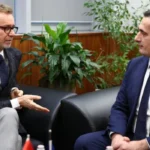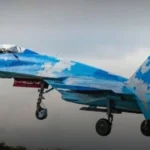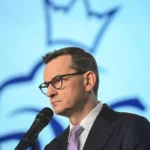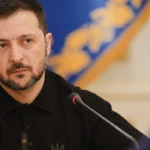Cultural diplomacy is implemented at both the public and private levels. The Élysée Treaty, signed in 1963 between the French Republic and the Federal Republic of Germany, is a good example. It defines the framework for cooperation in various fields between the two countries, allowing their citizens to know each other, talk to each other and appreciate each other.
Cultural exchanges
In 2008, two famous German and French choreographers, Raphael Hillebrand and Sébastien Ramirez, came to Vietnam at the invitation of the Goethe Institute of Hanoi and L’Espace – French Institute of Hanoi – for a hip-hop dance project German-French-Vietnamese cooperative. The best dancers of the Vietnamese group Big Toe were selected and underwent rigorous training before the official performance in February 2011.
In September 2023, the opera Princess Anio, which revolves around the romance between a Vietnamese princess and a Japanese merchant, was staged by a team of artists from both countries, on the occasion of the 50th anniversary of the establishment of their diplomatic relations. This work conveyed a message of bilateral fraternity.
“2023 is the year of cultural diplomacy as it celebrates 50 years of diplomatic relations between Vietnam and many countries, after the Paris Agreements of 1973,” commented Nguyên Ðình Thành, holder of a master’s degree in cultural management. cultural organizations at Paris Dauphine University (France).
“However, I think that cultural activities should not be held only on the occasion of these celebrations. They need to be organized at a higher level. There should be regular cooperation among artists to take cultural diplomacy to new heights,” he added.
Popularization
In Vietnam, the beautiful Ngoc Hân is not only known as Miss Vietnam 2010, but also as an áo dài stylist, who “brings together the quintessence of Vietnamese and world culture”. This is the guiding idea of his creations.
She has many collections of this traditional Vietnamese slit outfit inspired by the cultures of the countries she has visited. “I believe that +áo dài+ and fashion in general constitute a cultural bridge that helps to better understand Vietnamese culture,” she shared.
The designer receives special orders from heads of state and their wives during their visit to Vietnam, as well as foreign ambassadors and diplomats working in the country. To satisfy them, she takes the time to familiarize herself with the cultures of the countries where these personalities come from.
Traditional áo dài can help raise awareness of Vietnamese fashion and culture to the world. To do this, the State must support designers by offering their collections in tourist sites such as the Temple of Literature in Hanoi, the old town of Hoi An (Quang Nam province, Center) or the Imperial City of Huê (Thua Thiên Huê province, Center), she noted. This will allow them to present their áo dài to travelers, an effective way to popularize Vietnamese culture at a reasonable cost.
The Republic of Korea and Japan have succeeded. Tourists in Kyoto and Osaka, for example, can easily rent traditional Japanese costumes while visiting famous landmarks.
Combination
In Vietnam, visitors to the ancient Imperial City of Hue like to take photos of themselves in ancient costumes, but most of them are Vietnamese, as it is difficult for foreigners to access this service.
Travelers are used to using apps like Klook (offering activities in 400 cities around the world), so Vietnam can work with these platforms to help tourists rent traditional costumes.
Last October, the Vietnam – Japan Festival Symphony Orchestra, composed of artists from both countries, participated in a series of performances in six cities and prefectures of the country of the “Rising Sun”, on the occasion of the 50th anniversary of the establishment of bilateral diplomatic relations.
This orchestra was made up of 60 musicians, half Japanese and half Vietnamese, under the direction of the famous Vietnamese conductor Ðông Quang Vinh. It was the first time that a symphony orchestra composed of Vietnamese and Japanese artists was led by a Vietnamese conductor.
Ta Quang Ðông, Deputy Minister of Culture, Sports and Tourism, said it was a special art program that aroused strong emotions among Japanese audiences, as the first performance of a Vietnamese-Japanese orchestra. In particular, it was the first time that Japanese audiences could enjoy the combination of traditional Vietnamese musical instruments and a symphony orchestra.
Akihiko Fukai, president of Japan’s Gunma Bank, called the performance “unique, attractive and very successful.” He stressed that the show demonstrated the strengthening and deepening of cultural exchanges between the two countries.
Conductor Ðông Quang Vinh informed that many people contacted him after the event, telling him that they wanted to come to Vietnam to attend performances by Vietnamese artists, or even perform in Vietnam.
This article is originally published on lecourrier.vn






